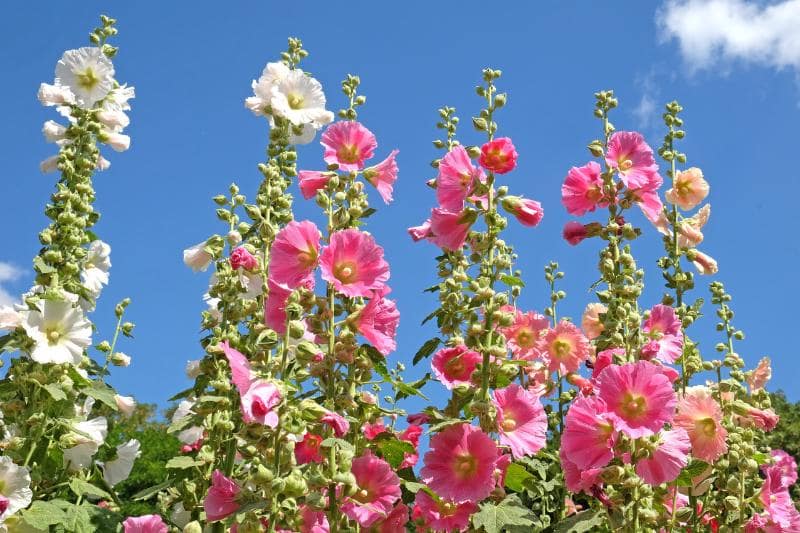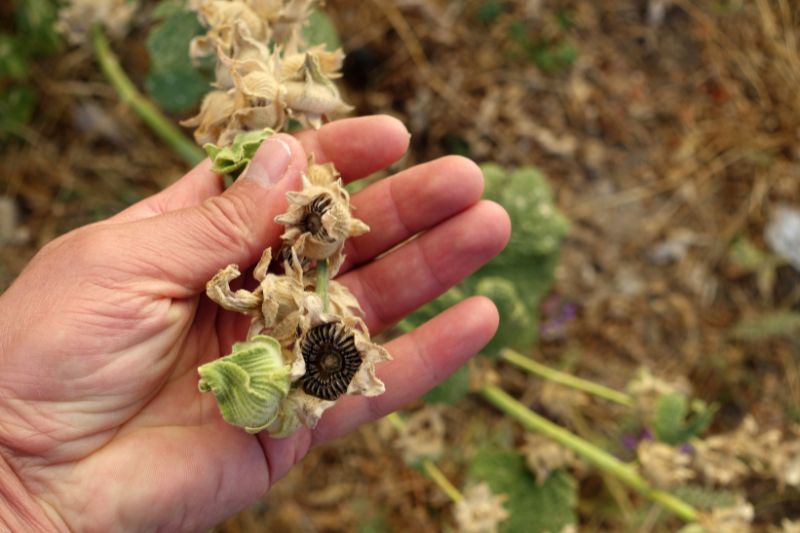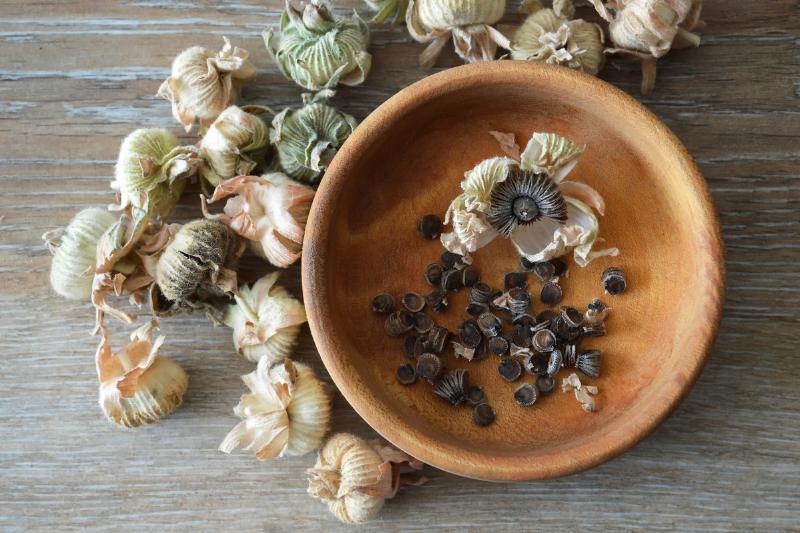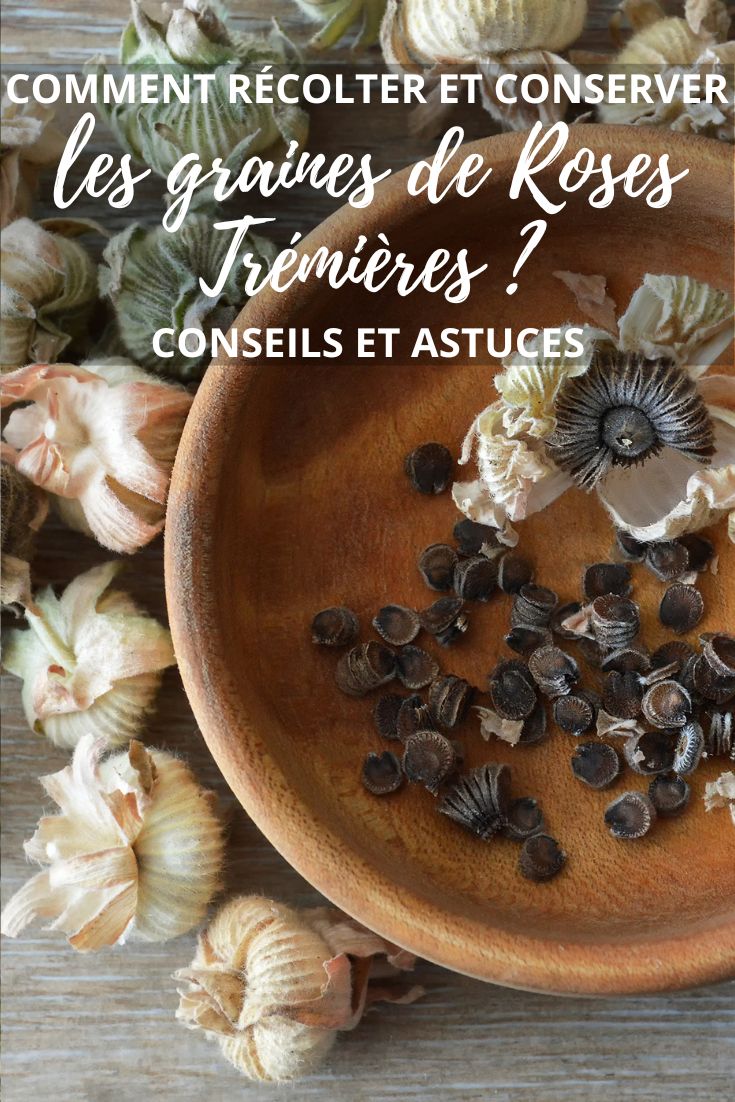The hollyhock (Alcea rosea) is a perennial plant valued for its tall stems adorned with colourful flowers, grown as a biennial. If you want to enjoy these magnificent plants year after year without buying new seeds, you can harvest them yourself! Harvesting and storing hollyhock seeds is easy. Discover, in this tutorial, how to do it step by step.

Choose right time to harvest seeds
Hollyhocks generally flower in summer, from June to September, depending on variety and region. Once flowers have faded, they form pods or capsules containing seeds. These capsules must ripen completely for seeds to be viable.
Best time to harvest is when green capsule turns brown (sometimes brownish-green) and dry, but before it opens and disperses seeds onto ground. This usually happens at end of summer or start of autumn. Harvest in dry weather, ideally late afternoon, after sun has removed moisture from pods.

Harvest seeds
1- Equip yourself with a pair of scissors or a clean pruning shear and a container (such as a small bowl).
2- Carefully detach ripe capsules from stems and collect them in your container.
3- Once all capsules are harvested, open them gently over a work surface. Inside you will find several small flat seeds, often light brown or black. Gently shake capsule to release seeds. Separate seeds from each other carefully.

Drying seeds
Before storing seeds, it is important to dry them well to avoid any risk of mould.
How to dry seeds?
- Place seeds on a flat surface, such as a tray or a clean cloth. Avoid damp or closed surfaces that could retain moisture.
- Leave to dry for about a week in a dry, ventilated place away from direct sunlight. This allows seeds to dehydrate completely.
Store hollyhock seeds
Proper storage ensures seeds remain viable and germinate well when you sow them.
- Choose right container: Prefer kraft paper envelopes that you can seal. Avoid airtight boxes if possible, as they can retain humidity.
- Label your seeds: On envelope, note plant name, variety (if known), and harvest date. This will help you know how long they remain viable (generally 2 to 3 years for hollyhocks).
- Store in a cool, dry place: Avoid humidity and sudden temperature changes, as these can reduce seed viability. A cupboard or a cool, dry room is ideal.
When and how to sow your hollyhock seeds?
After patiently harvesting and storing your seeds, comes time to sow them. Hollyhocks can be sown directly outdoors or in buckets.
Best time to sow:
- Outdoors: sow directly in ground in spring or early summer, after last frosts.
- In buckets: for better germination, sow seeds in buckets indoors from late winter. This allows you to transplant young plants in spring when well developed.
- Note that hollyhocks usually produce small foliage first year (50 to 100 cm height), then flower in second year.
Sowing tips:
- Prepare and loosen well-drained soil slightly enriched with compost.
- Sow seeds about 0.5 to 1 cm deep, spacing them at least 15–20 cm apart, as mature plants are quite large.
- Water after sowing, then keep soil slightly moist until young shoots appear, usually in 2 to 3 weeks.
- If sown in buckets, transplant young plants outdoors once they have developed several true leaves and night temperatures are above 8–10 °C.
A few additional tips
- Variability: hollyhocks grown from seed may sometimes not produce flowers identical to parent plant, especially in colour. This variation is part of joy of gardening with seeds!
- Monitor for diseases: only harvest seeds from healthy plants, as some fungal diseases can be transmitted via seeds.
































Comments